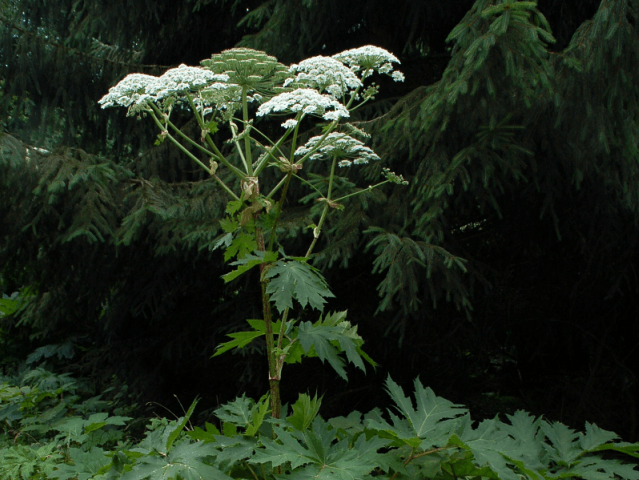Environmental officials are advising northern Virginians to be on the lookout for the toxic “giant hogweed.”
In a Facebook message posted on the afternoon of June 12, the Massey Herbarium at Virginia Tech announced their discovery of 30 giant hogweed plants in Clarke County. The giant hogweed is extremely poisonous; its sap is capable of causing third-degree burns, and even blindness.
According to the New York Department of Environmental Conservation, “The sap prevents your skin from protecting itself from sunlight which leads to a very bad sunburn.” If it stopped there, it would still be a serious health hazard. But “heat and moisture (sweat or dew) can worsen the skin reaction.” Those burns can leave long-term scarring, but even that pales in comparison to the blindness that can result if the sap makes contact with your eyes.
The Isle of Wight County echoed these concerns in a safety alert posted to their official Facebook page. “There have been reports from VDOT of sightings of Giant Hogweed in the Staunton area and Middlesex County,” they said. “There is a strong possibility that the Giant Hogweed could find its way into the Tidewater/Coastal Virginia area.”
Giant hogweed is on the Virginia Department of Conservation and Recreation’s “Invasive Plants Early Detection Species” list. It poses a danger not only to people, but to local wildlife and other native plants. If you should encounter one, the NYDEC recommends that you avoid using a weed-whacker, or anything that might splatter the toxic sap.
The threat of giant hogweed is stubborn, since its seeds can remain dormant in the soil for up to 15 years. The safest answer to a potential infestation is the employment of pesticides like glyphosate or triclopyr.

COMMENTS
Please let us know if you're having issues with commenting.